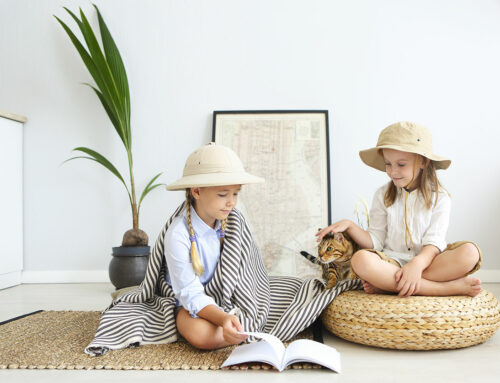By Lana Hazlett
Learning to love classical music at an early age is a priceless gift.
Let’s say you are given a gift, but you don’t bother to open it. How would you ever know what treasure you are holding in your hand? We hear classical music played all the time in commercial ads on TV, in the mall, on the radio, and many other places. Why not introduce the world of classical music to your children?
Recent academic studies zeroed in on classical music, showing that listening benefits the brain, sleep patterns, the immune system and stress levels.
Students who are multi-taskers seem to benefit most. Some say Mozart’s chamber music may be the most effective for improved test performance. Open this priceless gift today!
We can love music at any age. Even a baby responds to music. Those little arms and legs come alive. The children’s brains are actually growing and benefiting from tones and melodies of the composers’ great works. It also benefits our moods. Music has been proven to help people with dementia escape in a song and bring back memories of better times. Children simply have fun while responding to music in various ways.
Soon your child will be watching a TV commercial and say “Mommy, that is Mozart’s music.” All of this comes so naturally.
Play, sing, and move to the music. Have fun. Act out the opera and ballet stories. Use your imagination, it can be powerful! Composers can become a friend to your children. While creating a messy art project, listen to well-known classical pieces.
As the teacher, you will develop programs appropriate for age, interests, and the education level of your child or student. The study of instruments and learning the rudiments of musical notation can be implemented into your curriculum.
They may stand on a giant cleft and call out the names of the lines and spaces. While listening to the music of Peter and the Wolf, have the children match pictures of instruments to the characters. Why not create a musical Velcro dart board to learn musical symbols.
We don’t all learn in the same way.
For years the advertising community has profited from the well-known fact that music enhances one’s ability to retain information. Some of the most commonly used classical compositions used in commercials are the William Tell Overture, Eine Kleine Nachtmusik, Ode to Joy and lots more.
Similar to how advertising pairs jingles with images, the use of music in the classroom or while studying is consistent with theories of multi-sensory learning. Multi-sensory means implementing more than one sense, such as sight, hearing, touch and movement.
The more senses we use, the deeper and broader the degree of learning. Music also touches the soul.
Provide your children with a variety of experiences. This is the beginning of a journey to a lifelong love for the classics!
I want children to learn to love classical music. When we begin to read, we know that letters and sounds are learned more quickly when simply put to fun, rhyming music. From my experience in teaching, students pick up the sounds quicker and more efficiently than simply repeating those sounds verbatim. Why not put these sounds to a classical tune such as Beethoven’s Turkish March?
Learning math facts are also accelerated by music.
We often have students say and repeat difficult-to-learn facts rather than sing, move and even dance to them. Music and movement tremendously increase the recall of difficult facts because getting the body physically involved strengthens neurological connections in the brain.
Let’s not forget the sounds of nature. From the beginning, music and art have existed in nature. One can’t deny the beauty found in nature such as majestic rivers (ebb and flow), and dynamics (loud and soft) which can be felt and heard in the sea. The artistic mural which is created before our eyes as one season follows the next is truly art of the highest degree. Far above the earth the songs of birds can be heard.
Sounds of all types are important to a growing brain. These sounds and tones are music to the brain and can be used to calm a high-energy child.
Whether you use music as the main teaching modality or background sound while children learn, music should play a large role in your child’s education.
Yes, kids simply have fun with the classics!
***
Lana Hazlett grew up on a farm in western Pennsylvania, where her loving, hard-working parents gave her and her brothers the best life possible. Lana studied the piano for twelve years under the direction of Joann Thurston, her beloved instructor, who recognized Lana’s true love was singing. Lana enjoyed every opportunity provided to her to sing at the Chewton Christian Church she attended in her childhood.
A graduate of Westminster College, Lana majored in Elementary Education with a Music minor. Her education prepared her for her first professional assignment teaching music to 1,500 schoolchildren in Blacksburg, Virginia. She and her husband, Bill, soon welcomed two unbelievable children, Holly and David, to the world.
After relocating to New Orleans, Lana continued following her passion for singing and teaching music at the Oakpark Baptist Church Day School. Exercising her talents, she soon formed the Hazlett School of Music, which lasted for seventeen years before her family moved to the Woodlands, Texas. The relocation was but a brief caesura, a small break in the music, before establishing her music school at the new location and serving as the Educational Director for the Woodlands Orchestra.
Lana describes the experience, “Life is a one step at a time process. Words of love move us forward. Each of us must simply be the person God created us to be. Shall we say, together? I will simply be me!”



